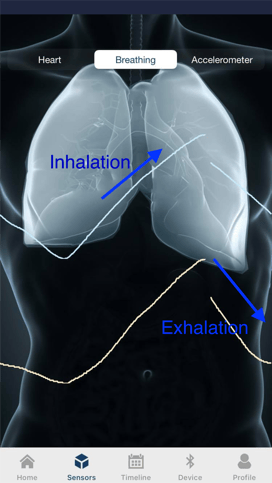How do the Hexoskin RIP sensors work?
Our breathing sensors are based on respiratory inductive plethysmography (RIP) technology. They detect rib cage expansion and compression during respiratory cycles. The embedded loops are located at the thoracic and navel levels and allow for the monitoring of thoracic and abdominal breathing independently.
The Hexoskin generates a low current-low voltage signal and transmits it to the RIP bands in the shirt. Based on the RIP band lengths, the signal oscillates at different frequencies. We monitor these changes in frequency and translate them to respiration values 128 times per second.
More precisely, as the user is breathing in and out, the RIP bands generate an oscillation frequency. An increase in chest band diameter (inhalation) will produce a decrease in frequency.
On the Hexoskin App, the signal is processed to invert the values and show a "positive" peak for inhalation and a "negative" peak for exhalation. It was decided to invert the signal for the visualization to be more representative of what the breathing curves should look like.

On the Dashboard, given that it is showing raw data, you will see an increase in the frequency for exhalations and a decrease in the frequency for inhalation (as shown below).
